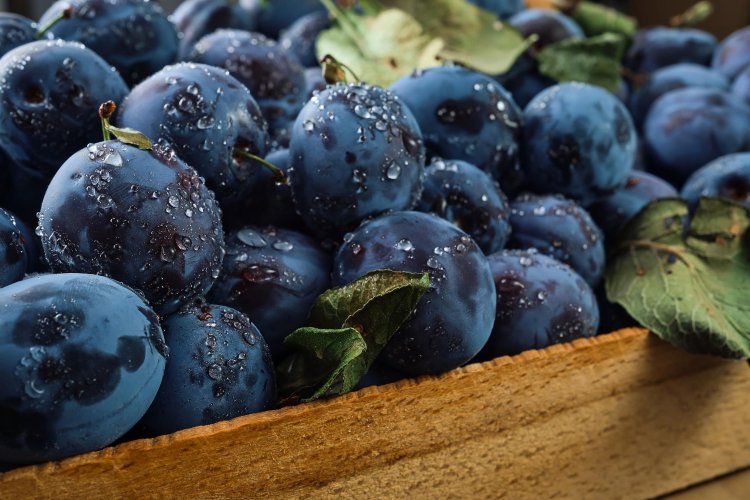Exploring the World of Plums: An In-Depth Guide
Plum, a versatile and delicious fruit, holds a rich history and a wide array of culinary and health benefits. In this comprehensive guide, we delve deep into the world of plums, exploring their origins, nutritional value, health benefits, varieties, culinary uses, and tips for selecting and storing them.

Origins and History
The plum traces its origins back to ancient times in the region of modern-day Central Asia, where it is believed to have been first domesticated. From there, the cultivation of plums spread to various parts of Europe and Asia, where different cultivars were developed to suit different climates and growing conditions.
Plums have played a significant role in human culture and cuisine for thousands of years. They were prized by ancient civilizations such as the Greeks, Romans, and Chinese for their sweet flavor, juiciness, and nutritional value. Throughout history, plums have been celebrated in art, literature, and folklore, symbolizing abundance, fertility, and prosperity in many cultures.
Nutritional Value and Health Benefits
Plums are not only delicious but also packed with essential nutrients, vitamins, minerals, and antioxidants that contribute to overall health and well-being. They are an excellent source of vitamin C, vitamin K, potassium, and dietary fiber, all of which play crucial roles in maintaining various bodily functions.
The high fiber content of plums promotes digestive health, prevents constipation, and may help lower cholesterol levels. Additionally, the antioxidants found in plums, such as anthocyanins and phenolic compounds, have been shown to possess anti-inflammatory, anti-cancer, and anti-aging properties, protecting cells from oxidative damage and reducing the risk of chronic diseases such as heart disease, diabetes, and certain types of cancer.
Potassium, another essential nutrient present in plums, helps regulate blood pressure, maintain proper fluid balance, and support heart health. Consuming potassium-rich foods like plums as part of a balanced diet can help reduce the risk of hypertension and stroke.
Varieties of Plums
Plums come in a wide range of colors, shapes, sizes, and flavors, with thousands of cultivars cultivated worldwide. Some popular varieties include:
-
European Plums (Prunus domestica): These plums are typically oval-shaped with a pointed tip and have a sweet flavor when ripe. Examples include the Italian Prune Plum and the Damson Plum.
-
Japanese Plums (Prunus salicina): Japanese plums are larger and rounder than European plums and often have a more tart flavor. Examples include the Santa Rosa Plum and the Satsuma Plum.
-
American Plums (Prunus americana): Native to North America, American plums are small, round, and often have a tart flavor. They are commonly used in jams, jellies, and desserts.
-
Hybrid Plums: There are also many hybrid varieties of plums, which are crosses between different species. Examples include the Pluot (a cross between a plum and an apricot) and the Aprium (a cross between a plum and an apricot).
Each variety of plum has its unique taste, texture, and culinary uses, making them suitable for eating fresh, cooking, baking, or preserving.
Culinary Uses
Plums are incredibly versatile and can be enjoyed in a variety of ways. They can be eaten fresh as a healthy snack, added to salads for a sweet and tangy flavor, or used in both sweet and savory dishes. Plums are commonly used in desserts such as pies, tarts, crumbles, and cobblers, where their natural sweetness enhances the flavor of the dish.
Plums can also be cooked down into jams, jellies, and preserves, which can be enjoyed spread on toast or used as toppings for pancakes, waffles, or yogurt. In addition, plums can be dried to make prunes, a popular and nutritious snack known for their high fiber content and digestive health benefits.
Selecting and Storing Plums
When selecting plums, it's essential to choose fruits that are ripe, firm, and free from blemishes or bruises. Ripe plums should yield slightly to gentle pressure and have a sweet fragrance. Avoid plums that are too hard or too soft, as they may be underripe or overripe, respectively.
Once you've selected ripe plums, store them in the refrigerator to maintain their freshness and extend their shelf life. Plums can be stored in a perforated plastic bag in the crisper drawer of the refrigerator for up to one week. To ripen firm plums, leave them at room temperature for a few days until they soften and develop a deeper color.
Plums, a delightful and nutritious fruit, hold a rich history and a wide range of culinary and health benefits. Whether eaten fresh, cooked, baked, or preserved, plums are a versatile ingredient that adds flavor and nutritional value to a variety of dishes. With their diverse varieties, flavors, and culinary uses, plums continue to be a beloved fruit enjoyed by people all around the world.
Disclaimer
The information provided in this article is for educational purposes only and should not be considered medical advice. If you have any health concerns or are experiencing symptoms, it is important to consult with a healthcare professional, such as a doctor or clinic, for proper diagnosis and treatment. Always seek the advice of your doctor or other qualified health provider with any questions you may have regarding a medical condition. Do not disregard professional medical advice or delay in seeking it because of something you have read in this article.
Hashtags
#plums #healthbenefits #nutrition #culinaryuses #fruitvarieties #freshfruit #healthyfood #plumrecipes
What's Your Reaction?





















